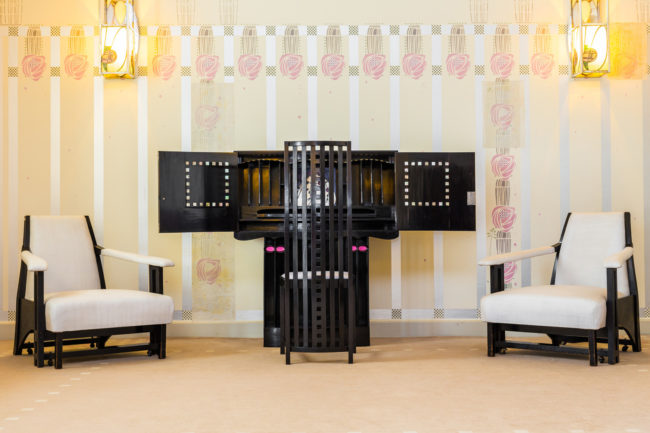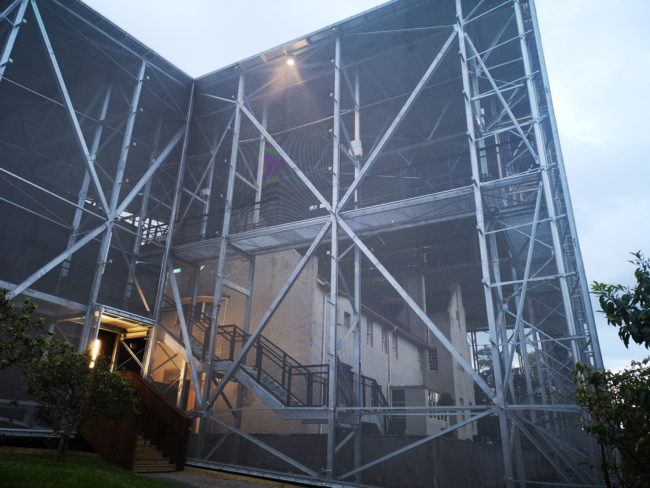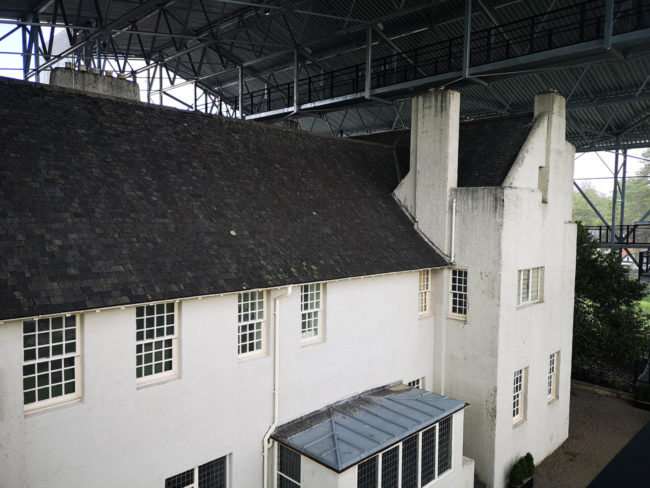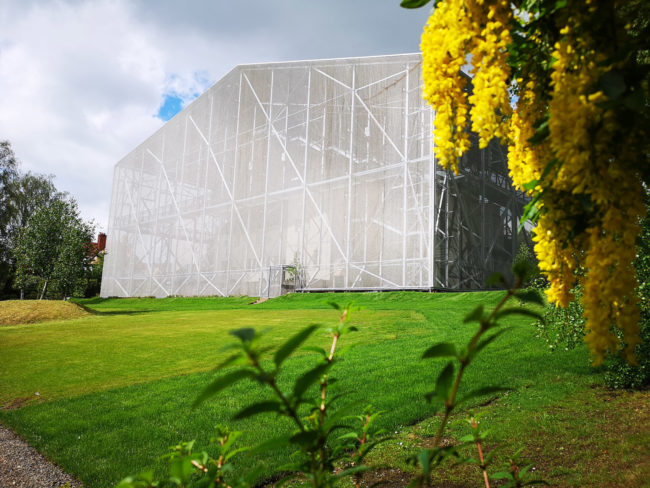Charles Rennie Mackintosh’s masterpiece The Hill House is “dissolving like an aspirin in a glass of water,” says the National Trust for Scotland’s President Neil Oliver.

The Hill House is considered to be the finest example of domestic architecture by the early modern designer. However, Mackintosh’s aesthetic, combined with his experimental use of new materials, has meant that the house has been soaking up water like a sponge for over 115 years.
Battered by around 190 days of rain each year, the long-term survival of the building is in doubt and there’s a real danger of its priceless, Mackintosh-designed interior being lost forever.
Charles Rennie Mackintosh was at the peak of his architectural career when he was commissioned to create the Hill House. He had just finished the first half of the Glasgow School of Art a few years earlier and, working together with his wife Margaret Macdonald, he produced a design masterpiece.
The Hill House stands out among other Arts & Craft and Art Nouveau houses in the UK because it has survived intact for so long. The house has original furnishings, fixtures, and fittings in situ – all of which were part of Mackintosh’s all-encompassing approach to design.
 A view of The Hill House from outside 'The Box.'
A view of The Hill House from outside 'The Box.'
The Hill House Box
The Hill House Box is the National Trust for Scotland’s innovative solution to the problem of water damage at the Hill House, and our most ambitious conservation project yet.
Designed by award-winning architects Carmody Groarke, the Hill House Box is a vast semi-transparent shelter around the main house, consisting of 165 tons of steel frame swathed in chainmail made up of 32.4 million rings, themselves weighing 8.3 tons.
The Box acts as a giant shield covering the entire building. It will protect it from the rain while allowing the house to dry out and letting conservators begin their work rescuing this iconic design.

Arguably as pioneering as the Hill House itself was when constructed in 1904, the Box will deliver a unique visitor experience.
Parts of the Hill House usually hidden from view can be discovered via raised walkways surrounding the house. For those with a head for heights, a walkway over the roof provides a perspective on the house that even Mackintosh himself could never have experienced! The walkways also provide spectacular views of the house’s suburban setting and the Firth of Clyde.
There is Still Time to Participate
The total cost of rescuing the Hill House will be in the region of $6 million. Of this, $4.5 million is being drawn from our reserves with the remaining $1.5 million coming from donations to the largest single fundraising campaign that we’ve ever undertaken. Donations came from many generous benefactors in this appeal, including the National Trust for Scotland USA Foundation.
It may take up to three years for the house to dry out fully before conservation work can begin in earnest. We will then need to develop a long-lasting solution, and implement it. This means the Hill House Box may have to stay in place for between seven and ten years.
 The Hill House inside the protective 'Box'
The Hill House inside the protective 'Box'
Ask us about the Box, the plans for the future or why we believe protecting the Hill House is so important. This is your chance to join the conversations that architects, conservators and historians will be having about the Hill House over the next decade.
If you wish to make a gift in support of The Hill House, please follow the link below.
